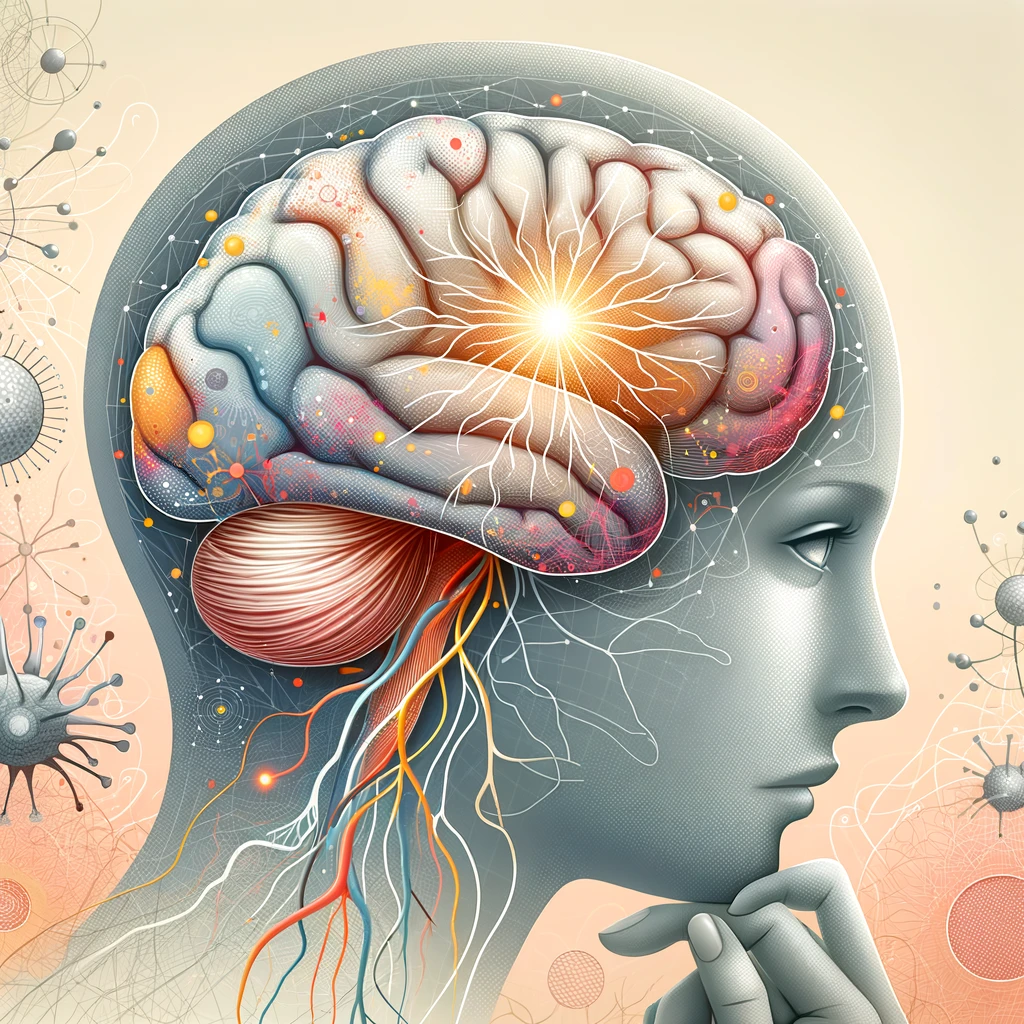- The Health League
- 0 Comments
Migraines are more than just headaches. They are a complex neurological condition with symptoms that can be debilitating for many. But what exactly causes migraines? In this comprehensive guide, we’ll delve into the science behind migraines, exploring their triggers, the physiological changes they induce, and the latest in prevention and treatment strategies. By understanding the root of the issue, you can take proactive steps towards managing and possibly reducing the frequency and severity of your migraines.
Migraine Symptoms & Diagnosis
Diagnosing migraines involves a thorough understanding of their symptoms and manifestations. The National Institute of Neurological Disorders and Stroke (NINDS) provides a comprehensive overview of migraine symptoms, which can include severe, throbbing pain typically on one side of the head, nausea, and sensitivity to light and sound, among others. Recognizing these symptoms is the first step in diagnosing migraines and distinguishing them from other types of headaches, allowing for more precise and effective management strategies.
The Migraine Brain: A Delicate Balance
Understanding the physiological changes in the brain that lead to migraines is crucial. Research from the Mayo Clinic suggests that migraines might be caused by changes in the brainstem and its interactions with the trigeminal nerve, a major pain pathway. Imbalances in brain chemicals, including serotonin, which helps regulate pain in your nervous system, are also thought to play a key role. This insight into the migraine brain’s delicate balance offers a pathway to understanding how these severe headaches occur, leading to more targeted and effective treatments.
Triggers and Thresholds
Migraine triggers are as varied as the individuals who experience them. Common triggers include stress, changes in weather or barometric pressure, hormonal changes, certain foods and additives, irregular sleep, and even intense physical activity. However, it’s not usually a single trigger but a combination that pushes the brain over its threshold and into a migraine.
Physiological Changes During a Migraine
During a migraine, several physiological changes occur in the brain. Initially, there’s a wave of electrical activity spreading across the cortex, known as cortical spreading depression. This leads to the release of inflammatory substances around the nerves and blood vessels of the head, causing pain and further amplifying the migraine response.
Prevention and Treatment: A Holistic Approach
When it comes to managing migraines, a holistic approach that addresses lifestyle, dietary, and sometimes medical interventions tends to be most effective. Understanding and avoiding personal triggers can significantly reduce the frequency of attacks. Maintaining a regular sleep schedule, managing stress through techniques like meditation or yoga, and staying hydrated can also help.
Migraine Treatments & Therapies
When it comes to treating migraines, a multifaceted approach is often necessary. According to WebMD, treatments can range from over-the-counter medications and prescription drugs to lifestyle changes and alternative therapies. Each treatment option targets different aspects of migraine attacks, whether it’s alleviating acute symptoms, preventing future episodes, or reducing their intensity. Understanding the variety of available treatments helps individuals make informed decisions about managing their migraine symptoms effectively.
Medical Treatments
For those whose migraines are severe or frequent, medical treatments may be necessary. These can range from over-the-counter pain relievers to prescription medications designed to prevent or stop migraines. Recent advancements in migraine-specific medications, such as CGRP inhibitors, offer new hope for chronic sufferers.
Chiropractic Care for Migraines
Chiropractic care has emerged as an ally in the fight against migraines. Through in depth assessments and specific manual therapies with such as Active Release Technique, fascial work and cupping chiropractors using specific migraine protocols can address tight muscles and fascia that may be impingement of the nerves and vessels in the back of the neck and head that may be triggering or making a patient’s migraines worse. Treating these impingements can reduce the frequency and intensity of migraine attacks. Treating migraine and headaches is largely focused on manual therapy, trigger identification and home care options. This means that chiropractors offer great options for treatment without the use of spinal adjustments if you would prefer not to have them. Learn more about how chiropractic care can help with migraines.
Empowering Yourself Against Migraines
Knowledge is power, especially when it comes to managing a condition as complex as migraines. By understanding the science behind what triggers your migraines and how they affect your body, you can work towards finding a treatment and prevention strategy that works for you.
For further reading and resources on managing migraines, visit our website. Whether it’s exploring the benefits of chiropractic care or staying updated on the latest in migraine treatment, we’re here to support your journey to better health.
Remember, while the path to managing migraines can be challenging, you’re not alone. With the right strategies and support, you can take control of your migraines and improve your quality of life.
Chiropractic care has emerged as an ally in the fight against migraines. Through in depth assessments and specific manual therapies with such as Active Release Technique, fascial work and cupping chiropractors using specific migraine protocols can address tight muscles and fascia that may be impingement of the nerves and vessels in the back of the neck and head that may be triggering or making a patient’s migraines worse. Treating these impingements can reduce the frequency and intensity of migraine attacks. Treating migraine and headaches is largely focused on manual therapy, trigger identification and home care options. This means that chiropractors offer great options for treatment without the use of spinal adjustments if you would prefer not to have them. Learn more about how chiropractic care can help with migraines.
Empowering Yourself Against Migraines
Knowledge is power, especially when it comes to managing a condition as complex as migraines. By understanding the science behind what triggers your migraines and how they affect your body, you can work towards finding a treatment and prevention strategy that works for you.
For further reading and resources on managing migraines, visit our website. Whether it’s exploring the benefits of chiropractic care or staying updated on the latest in migraine treatment, we’re here to support your journey to better health.
Remember, while the path to managing migraines can be challenging, you’re not alone. With the right strategies and support, you can take control of your migraines and improve your quality of life.

